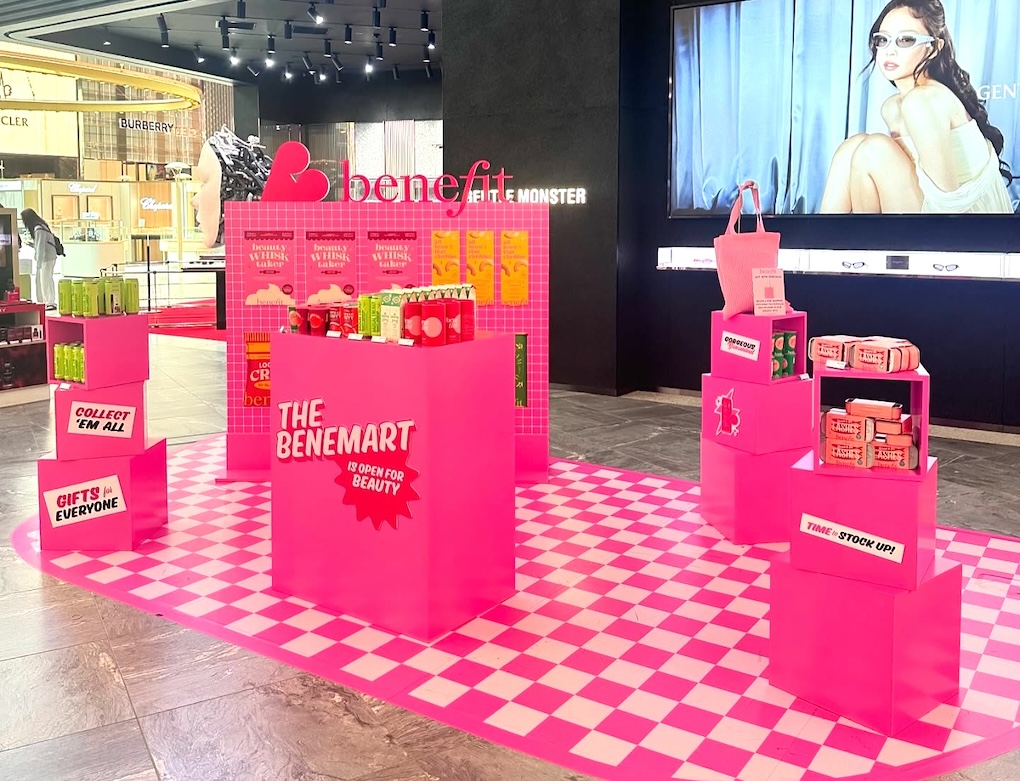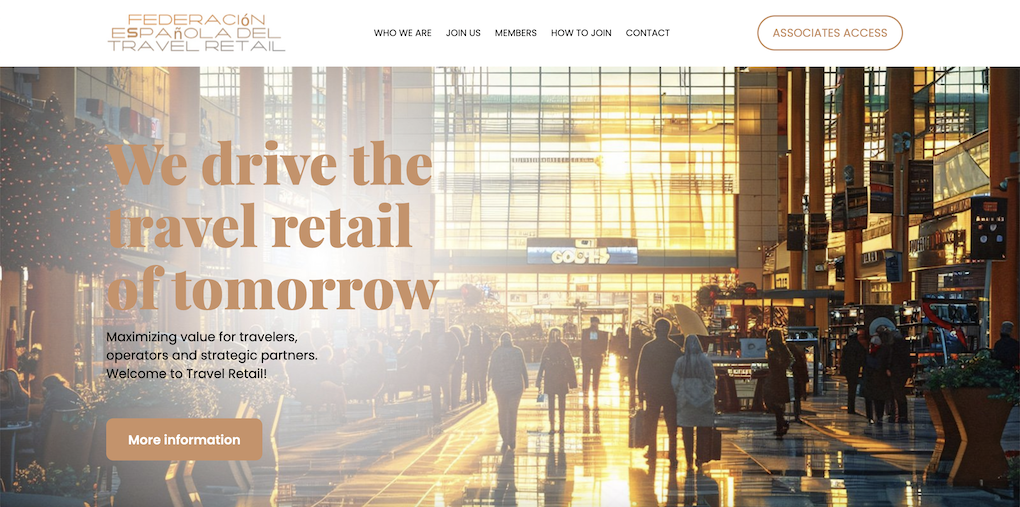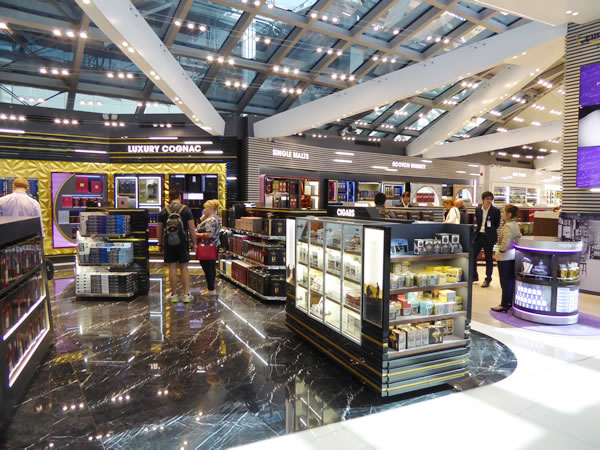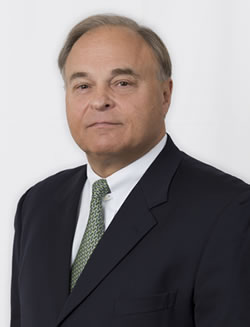 |
“The challenge we should set ourselves is the determination to keep striving to maintain dynamism and momentum – not to do so would be extremely unwise.“ |
Erik Juul-Mortensen President TFWA |
ASIA PACIFIC. TFWA Asia Pacific began today (13 May) in Singapore with a strong call for the regional industry to maintain the dynamism and momentum of recent years.
Opening a consistently engaging and powerful day-long conference that precedes the start of the exhibition tomorrow, TFWA President Erik Juul-Mortensen urged the industry to focus not just on big breakthroughs but on the “aggregation of marginal gains” that will build the business – through improvements to the supply chain, retail design, promotions and human resources.
He identified five opportunities that the industry must take to grow: using digital media in an aligned way to improve the passenger experience; adopting a scientific approach to the “˜human touch’ elements of training and recruitment; ensuring 100% stock availability through investing in back office infrastructure; making stores more intuitive and easy to shop; and providing a point of difference to the domestic market in travel retail’s product offer.
APTRA President Sunil Tuli (pictured below) discussed how the Asia Pacific business can work together to iron out imperfections in the customer journey and the way the business protects itself from external threats.
“Are our objectives clear in relation to our partners,” he asked, “and are we clear on who owns which part of the customer journey? The best examples are where the passenger is treated like a regular guest”¦with promotions based on what they bought on the last trip. But how often does this happen? Technology is not used properly to give passengers the best possible experience.”
The same level of attainment must also be sought in the industry’s efforts to protect itself, said Tuli. APTRA will be demonstrating its responsible liquor retailing training initiative at the exhibition; The Moodie Report will bring more details later in the week.
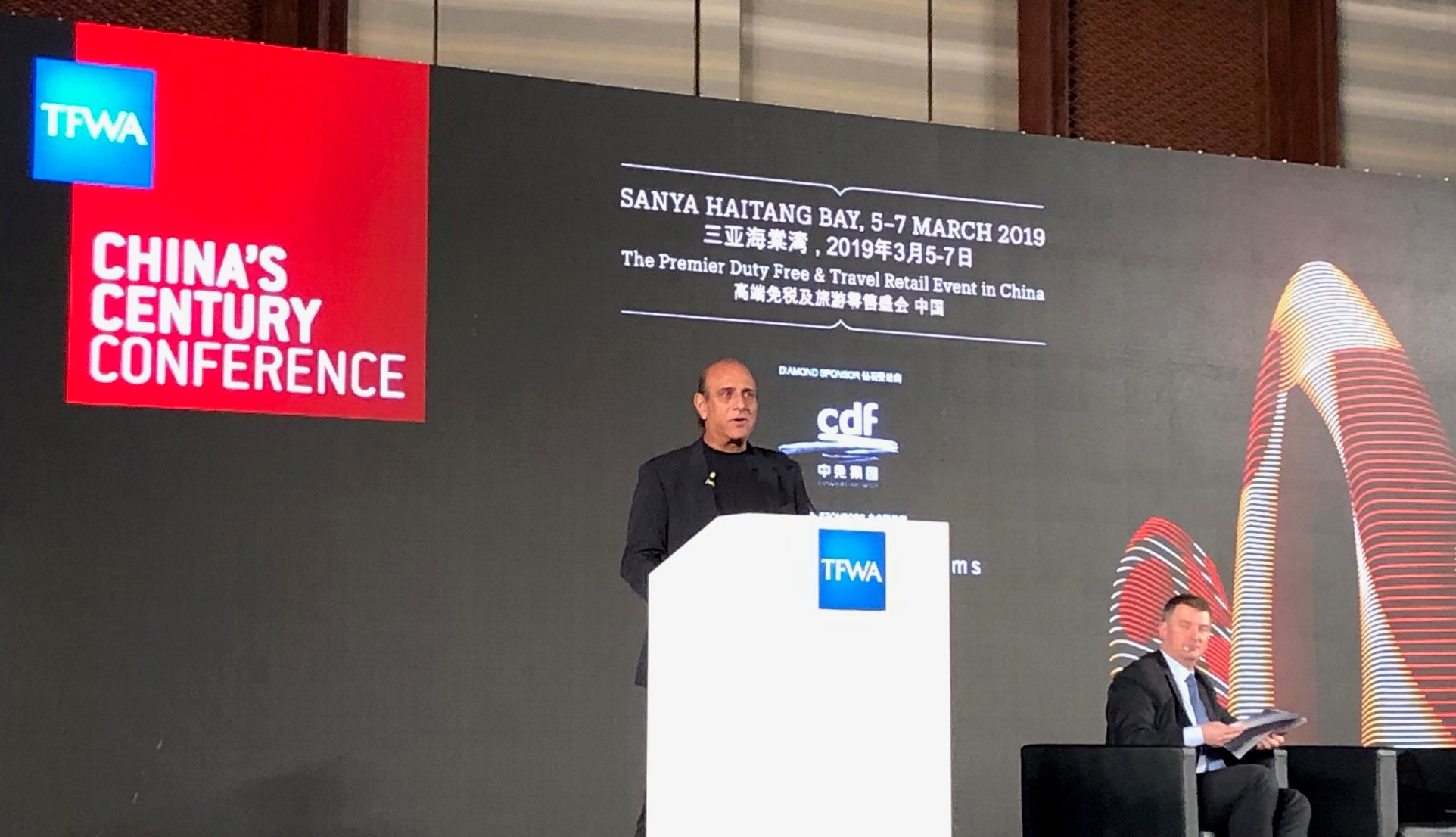 |
Diageo Asia Pacific President Gilbert Ghostine (pictured below) – who also oversees the company’s global travel retail business – focused on the qualities companies must nurture in order to succeed in the face of the challenges
Among those he focused particularly on reputation, including Diageo’s significant corporate social responsibility commitment to three important causes: Learning for Life providing skills training for young people; Wonderful Life, brining safe drinking water to African villages; and UN-backed women’s empowerment initiative Plan W, something Diageo has embraced at the highest level, including ensuring that it has high percentages of women at board level.
Ghostine also discussed leadership, using Diageo’s Johnnie Walker House project as an example – the supplier has opened houses in China that tell the brand story, educate consumers and offer exclusive blends. Further Johnnie Walker Houses will be opened [but not at Incheon International Airport as incorrectly reported earlier -Ed]. We’ll bring you further details on this key clarification soon and apologise for the error.
Partnership was also on the agenda, and Ghostine mentioned Diageo’s partnership with The Trinity Forum – organised by The Moodie Report in association with ACI -as one important initiative. “The Trinity concept is that we will achieve greater growth if we work closely together to improve the standard of retail execution,” he said, “It has been in existence for a decade, and as a result consumer experience definitely improved.”
 |
China Reform Foundation Chairman Dr Fan Gang (pictured below) provided an informed analysis of the growth prospects for the Chinese economy and the consumption of Chinese travellers. He argued that while growth has slowed to around 8%, it is potentially more sustainable than the “˜overheated’ inflation-causing growth of the past two decades.
Gang said that there is every reason to believe that GDP growth, albeit at a slower rate, would continue in China for the next 40-50 years based on the experiences of other Asian economies. He added that increasing consumption will be a big challenge given the high proportion of GDP that traditionally goes into savings – from both households and corporations. But increasing urbanisation and the growth of travel and luxury consumption, above GDP growth, will offer rapidly growing opportunities for brands and travel retailers.
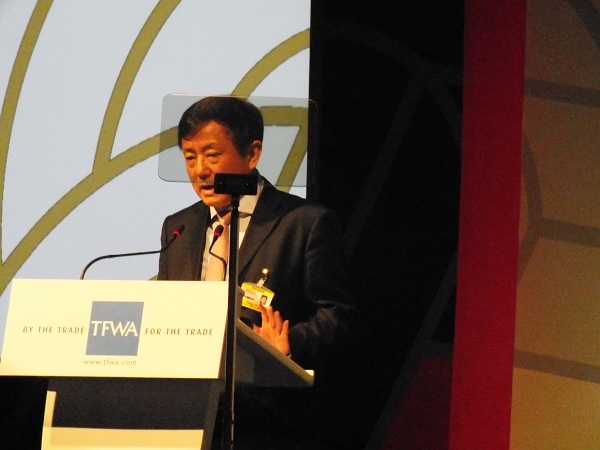 |
Former Prime Minister of Malaysia Dr Mahathir bin Mohamad (pictured below) concluded the morning plenary with a discussion of Malaysia’s path to economic success since it gained its independence. He provided interesting perspectives on the country’s growth until the Asian financial crisis, and its subsequent recovery – and he offered thoughtful insights into how Malaysia and other countries across Asia should seek to conduct mutually beneficial, non-confrontational relationships with China.
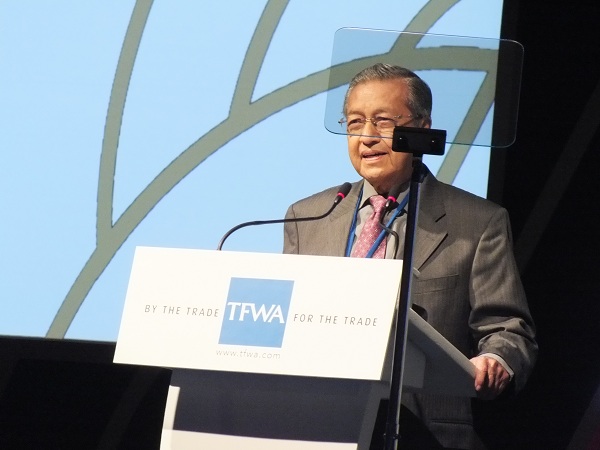 |
The “˜Perfect Journey’ workshop (Workshop A) explored how airports, retailers and brands can make the passenger journey a better experience – and ensure that retail is at the heart of that journey. Malaysia Airports Holdings Berhad (MAHB) Senior General Manager Commercial Services Faizah Khairuddin (below, second from left) illustrated how MAHB’s ELITE proposition serves as the foundation of the klia2 retail experience, redefining airports as lifestyle destinations. ELITE – Experiential, Liberating, Innovative, Thrilling and Ever-changing – is also an important guideline for retailers in conceptualising their offering to the four distinct customer profiles of klia2: Young Explorer, Savvy Leisure, Home Affluent and Business People. The lessons gleaned from this greenfield project will then be applied to all 39 airports in MAHB’s portfolio.
Taking a realistic view from the brand owner standpoint, William Grant & Sons Global Marketing Manager Ian Taylor (below, third from left) said that rather than seeking to create the perfect journey – an almost impossible endeavour as brands cannot control processes such as security and immigration – they can instead try to create “the perfect moment”. With the help of store design (strong brand displays), technology, retail furniture, product (gifts, limited editions and exclusives), shop floor staff (training and education) and a strong activation platform (theatre), brands can create a perfect moment of interaction with their consumers – and drive sales as a result.
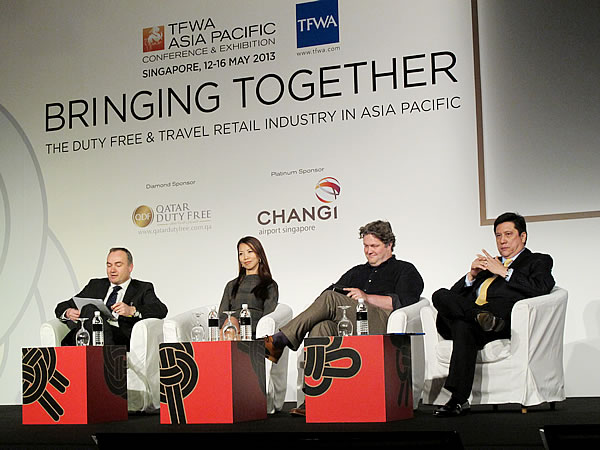 |
In a visually engaging and entertaining presentation where the “˜It’s more fun in the Philippines’ tagline was at the forefront, Duty Free Philippines (DFP) Chief Operating Officer Lorenzo Formoso (above, far right) illustrated how DFP successfully targeted its three main – and diverse – markets: tourists, regular travellers and the Balikbayan/Overseas Filipino Workers. The strategy for tourists involved partnerships with the Philippines Department of Tourism and travel agencies, promotions at DFP’s Fiesta Mall and airport locations, highlighting destination products, advertising in inflight magazines, and a focused social media programme. For regular travellers, DFP instituted loyalty schemes such as the Travelite Club and DFP Premier Club to encourage frequent visits and repeat purchases, supported by a series of fun events: celebrity concerts, chorale competitions, marching brands, etc. Understanding that the best way to reach its biggest market, the Balikbayan/Overseas Filipino Workers, is through their families, DFP communicates to the latter through TV and radio, out-of-home and lamp post advertising, and at the airport. The market is also offered the Balikbayan Plus card and Kabuhayan Shopping privileges.
The “˜Perfect Pitch’ workshop (Workshop B), moderated by John Sutcliffe, explored how industry stakeholders can cooperate more closely to build the business in Asia Pacific. Changi Airport Group Airside Concessions Division Assistant Vice President Monet Aluquin (below, left) presented four ways in which the airport is cooperating with its tenant and brand partners to create the One Changi Experience – “personalised, stress free and positively surprising”.
Changi’s initiatives include a tenant portal where customer feedback, store inspection results and service satisfaction ratings are collated; the installation of instant feedback units at stores and other services to provide quick customer satisfaction feedback; and the launch of an online shopping portal, iShop Changi, in the third quarter of 2013.
 |
Heinemann Asia Pacific CEO Steffen Brandt (above, second from left) discussed airport concession models and the frank exchange of information between airports, brands and retailers. He asked: “How do people choose the right partner? Some look into the partner’s bank account first, some want love and passion. If I had to choose I would go for the second one.”
L’Oréal Luxe Travel Retail Asia Pacific Managing Director Eva Yu (above second from right) picked up on the information sharing theme, talking about the need for clear key performance and return on investment indicators in order to allow brands to make greater investment in the travel retail channel.
“You can only improve what you can measure,” she said. “As a start we need to know nationality mix by airport, terminal and shop, as well as the impact promotions have on the average basket value and on category sales.”
There followed a lively round of questions exploring, among other topics, what role airlines should play in the Trinity and how much the airport bidding process had changed – if at all – in recent years.
 |
The ‘E-Perfect’ workshop (Workshop C) delivered an insightful overview of the pros – and pitfalls – of social media. The strong opening presentation by Patrón Spirits President International and Chief Operating Officer John McDonnell (above, right) described online media as “an inescapable trend”, not a choice. McDonnell shared how Patrón had harnessed a variety of online media to build awareness and excitement for its brand, while maintaining its commitment to quality and exclusivity, via initiatives such as The Patrón Social Club, and its Secret Dining Society. “The trick is to use [online media] within your limitations,” he declared.
Sticki Digital Media CEO Stephenie Rodriguez (above second from right) emphasised the importance of community building, and urged companies to foster a culture of collaboration, in a presentation that set out Nine Ways to Increase Penetration Through Innovation.
Jens Thraenhart (above, third from right), Co-Founder & President of Dragon Trail/Publisher China Travel Trends focused on the importance of Chinese social media, such as weibo.com, renren and WeChat – the fastest-growing social media platform in China.
The session concluded with a presentation from Sang J. Ahn, Head of Consulting at Incheon International Airport (above, third from left), who cautioned that “social media can’t be controlled”. He emphasised that new media was all about engagement; a two-way conversation that offered opportunities for empowerment and personalisation.
The “˜Perfection Personified’ workshop (Workshop D) looks into how the different approaches to staff training and human resources programmes are equipping the industry’s frontliners with the tools to serve their customers. Sydney Airport General Manager Retail Andrew Gardiner (below, seated far left) highlighted the role of the Sydney Airport Customer Charter in “bringing premium customer service to life”, and how the airport engages its stakeholders through research studies and partnerships such as the Airports Council International Airport Service Quality survey, retailer forums and customer satisfaction surveys. It all boils down to communicating the airport’s branding and vision clearly to all staff and ensuring they live up to it, he said.
Dubai Duty Free Recruitment & Employee Development Manager Rachael Green (below, seated second from left) illustrated how the travel retailer’s three diverse learning and development programmes – Electi, Eureka and Gotcha – have increased sales, customer service levels and more importantly, empowered and incentivised staff. The key, Green stressed, is positive reinforcement through the creation of a fun and open environment, where staff feel they are valued. The past year saw the lowest staff turnover in Dubai Duty Free – a validation of the retailer’s approach.
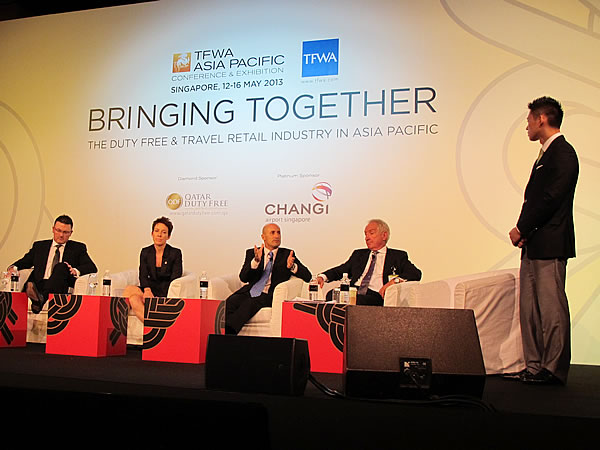 |
In his presentation, TravConsult Managing Director Trevor Lee (above, seated third from left) stressed that it is no longer enough for airports to be “China-ready” – the goal now is to be “China-friendly, international-ready”. He warned against prioritising the Chinese traveller over other Asian travellers with spending power such as the Japanese and the Indians, and that all airport staff – not just the Asians and not just in retail – should learn how to deal with and serve Asian travellers. Multilingual signposting, translated immigration cards and the offering of their native cuisines are some of the ways airports can engage Asian travellers outside the retail sphere.
DFASS Group Deputy Chairman and President Asia Pacific John Garner (above, seated far right) noted the different selling environments of airlines from ground shops, and how DFASS trains and incentivises the cabin crew of its 40 airline partners by partnering programmes such as ISPY (Inflight Sales Person of the Year). He advocated “going beyond expectations” and providing a “wow factor” for the customer.
The closing plenary session, themed “˜New Consumers, New Challenges’, featured presentations from Counter Intelligence Retail Managing Director Garry Stasiulevicuis and KPMG (Hong Kong) Principal Business Development Anson Bailey.
Reporting on the results of a recent global study on “˜non-shoppers’ commissioned by TFWA, Stasiulevicuis (below, third from left) identified the different types of non-visitors and non-shoppers, as well as the four main barriers to shopping: lost relevance (travel retail perceived as not offering anything different, with lack of attention to basic execution), other activities (alternatives to shopping at the airport such as dining, use of internet), value perception (easy price comparison online), and “˜other barriers’ (unwilling to carry items on board, not enough time, store too busy, confused). Stasiulevicuis suggested some solutions to these barriers: creating shopping destinations, increasing awareness on travel retail exclusives and novelties, and driving local identity to increase the relevance of the product offering; rewarding loyalty and clearly communicating value to enhance value perception; and identifying where passengers’ other activities can be interrupted and making shopping integral during these interruptions.
 |
Completing the session is Bailey (above, second from left), who examined the results of a study called “˜Global Reach of China Luxury’ published by KPMG. Some of the key findings include a growing “˜connoisseurship’ among the Chinese, driven mainly by value appreciation. The new Chinese consumer is white collar; whose top three preferred travel destinations are Hong Kong, Europe and Japan; and for whom buying luxury goods remains an important activity. One telling statistic, according to Bailey, is the digital penetration of the Chinese: 51% own tablets, while 78% own smartphones – an indicator of the potential of online shopping for luxury goods. Key drivers of the new digital Chinese consumer are the rising middle class and rapid urbanisation, and Bailey expects 75% of all newcomers into the top 50 cities in the world to be in China. As he aptly summed up: “China is heading for some serious consumption.”



